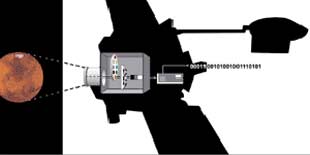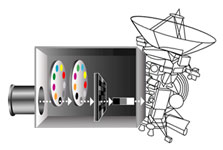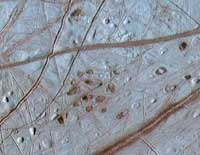Disclaimer: This material is being kept online for historical purposes. Though accurate at the time of publication, it is no longer being updated. The page may contain broken links or outdated information, and parts may not function in current web browsers.
The picture puzzles in the "Pixel This" game contain little information. Each one starts out with just a few large squares in different shades of gray. Each square is called a "picture element," or "pixel." The more pixels there are, the more details we see. This is how digital cameras work.
Cameras used on spacecraft are similar to digital cameras, except a lot tougher and a lot more sensitive. Instead of film, cameras on spacecraft have special light-sensitive devices similar to computer chips. These are called charge-coupled devices, or CCDs. Each CCD is made up of hundreds of thousands (or millions) of tiny pixels.
When the CCD camera takes a picture, it converts the pattern of light into a pattern of numbers. The highest numbers represent the brightest parts of the scene. Zero would represent black. Everything in between gets a number based on how bright or dark the shade of gray. But what about colors?


For each color picture, several pictures are taken, each through a different colored filter—like looking through different colored sunglasses. Each filter lets through only a certain color of light. For example, a red filter lets through only red light. So the red-filtered pixel data will show the brightness of the red colors in the scene.
After computers on Earth combine the pixel data from three pictures, one taken through a red filter, one through a blue filter, and one through a green filter, we can see the original colors in the scene from space—and all from shades of gray!




